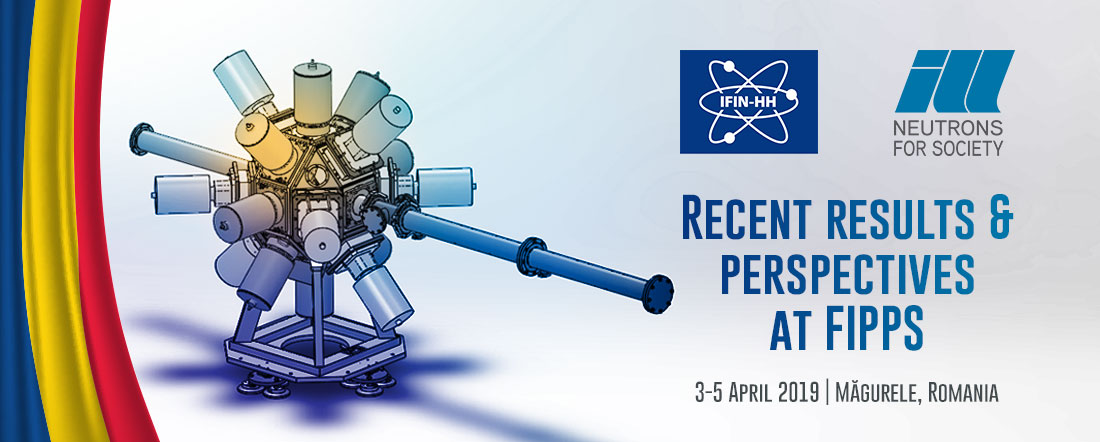Speaker
Description
For the neutron number N = 60, a sudden onset of the deformation has been observed in Y isotopes at the ground state, which is manifested by the presence of rotational bands (e.g. [1]). On the other hand, the occurrence of shape coexistence in nuclei with N = 58 and 59, in this region (e.g. [2]), suggests that the evolution of the deformation is a more gradual process. Our goal was to investigate N = 57, 96Y isotope where only a few states were known. Additionally, we decided to investigate whether deformed structures are still present in the 94Y nucleus which lies 5 neutrons away from the N = 60 boundary and in the 97Y with 59 neutrons.
The yttrium isotopes have been produced in the fission of 235U active target induced by cold neutron from the reactor at Institut Laue-Langevin. The level scheme up to excitation energies in excess of 5 MeV has been established based on multi-fold gamma-ray coincidence relationships measured with the new highly efficient HPGe array FIPPS [3] as well as during the EXILL campaign [4]. The experiment has been performed in September 2018 and it was the first fission measurement with FIPPS array. Special emphasis will be placed on comparison of those data with the ones collected during the EXILL campaign.
By exploiting delayed- and cross-coincidence techniques [5], the extensive structure has been delineated. During the analysis, over 50 new gamma transitions, which feed previously known low-spin states as well as the 9.6-s, 8+ isomer in 96Y isotope, have been identified [6, 7]. Moreover, a new isomeric state at 1655-keV excitation energy has been located with a half-life of 201 ns. By using the delayed-coincidence method it was possible to identify above the 201-ns state a few weak transitions, which seem to form a rotational band, in analogy to the structure above the 4- isomer in the 98Y isotope. In the case of 94Y isotope over 11 new gamma transitions have been identified [8] while in the 97Y, 8 new prompt lines can be observed [7]. Angular correlation analysis supported by shell-model consideration allowed to propose spin-parity assignments for most of the new levels.
The existence of the new isomeric state and the possible deformed band built on that isomer in the N = 57, 96Y isotope shed new light on the study of the onset of deformation in neutron-rich nuclei around N = 60. This observation is also in line with the new findings in the 94Y and 97Y isotopes and will be widely discussed.
References:
[1] E. Chiefetz et al., Phys. Rev. Lett. 25, 38 (1970).
[2] W. Urban et al., Nucl. Phys A 689, 605 (2001).
[3] C. Michelagnoli et al., EPJ 193, 04009 (2018).
[4] M. Jentschel et al., J. Instrum. 12, P11003 (2017).
[5] Ł. W. Iskra et al., Phys. Rev. C 89, 044324 (2014).
[6] Ł. W. Iskra et al., Europhys. Lett. 117, 12001 (2017) and ILL annual report.
[7] Ł. W. Iskra et al., (in preparation).
[8] Ł. W. Iskra et al., Phys. Scr. 92, 104001 (2017).

